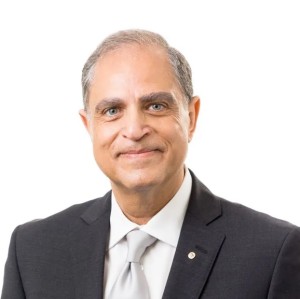- Video Library
- Ash Attia, Bionic Vision Technologies - Suprachoroidal Visual Implants | LSI USA '24
Ash Attia, Bionic Vision Technologies - Suprachoroidal Visual Implants | LSI USA '24

Ash Attia
CEO at BVT | Development and Commercializing Vision Restoration Technologies
Visionary CEO with 30+ years cardiac surgery, heart and lung transplants, cardiac rhythm management, heart failure, inherited retinal implants devices and other Medical Devices
With over 30 years of international experience in the medical devices, biotech, and diagnostics industry, Ash Attia is the CEO of Bionic Vision Technologies (BVT), a company that develops and commercializes innovative vision restoration technologies for people with retinal degenerative conditions. Ash holds a PhD in Med Science, a Master of Science in Electronics and Biomedical Engineering, and a Graduate Diploma in Board Directors Program.
Ash is a proven leader and strategist who has successfully launched, managed, and expanded start-up operations, distribution networks, sales and marketing teams, R&D projects, and strategic partnerships across the Asia Pacific region, the Middle East, the USA, and Europe. He is passionate about delivering life-Saving and life changing solutions to patients and enhancing the quality of healthcare globally. He is also an experienced board director and a Fellow of the Australian Institute of Company Directors. Ash's specialties include executive management, medical devices commercialization, strategic business development, operations, technical and clinical operations, and corporate governance.
Ash Attia
CEO at BVT | Development and Commercializing Vision Restoration Technologies
Visionary CEO with 30+ years cardiac surgery, heart and lung transplants, cardiac rhythm management, heart failure, inherited retinal implants devices and other Medical Devices
With over 30 years of international experience in the medical devices, biotech, and diagnostics industry, Ash Attia is the CEO of Bionic Vision Technologies (BVT), a company that develops and commercializes innovative vision restoration technologies for people with retinal degenerative conditions. Ash holds a PhD in Med Science, a Master of Science in Electronics and Biomedical Engineering, and a Graduate Diploma in Board Directors Program.
Ash is a proven leader and strategist who has successfully launched, managed, and expanded start-up operations, distribution networks, sales and marketing teams, R&D projects, and strategic partnerships across the Asia Pacific region, the Middle East, the USA, and Europe. He is passionate about delivering life-Saving and life changing solutions to patients and enhancing the quality of healthcare globally. He is also an experienced board director and a Fellow of the Australian Institute of Company Directors. Ash's specialties include executive management, medical devices commercialization, strategic business development, operations, technical and clinical operations, and corporate governance.

17011 Beach Blvd, Suite 500 Huntington Beach, CA 92647
714-847-3540© 2025 Life Science Intelligence, Inc., All Rights Reserved. | Privacy Policy







